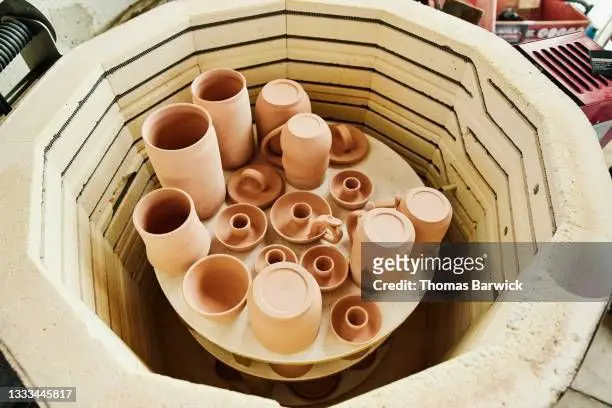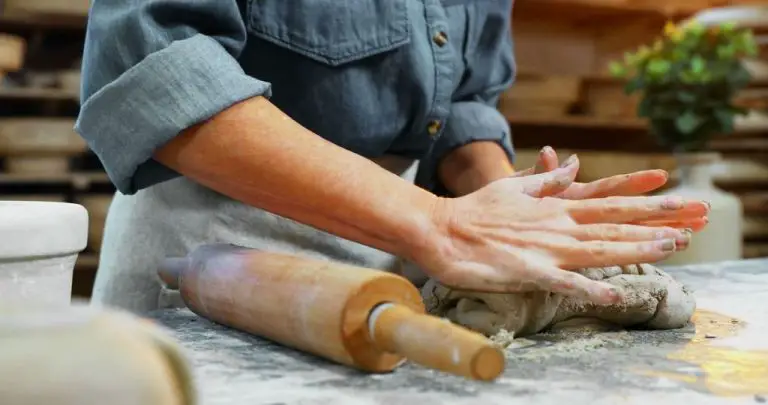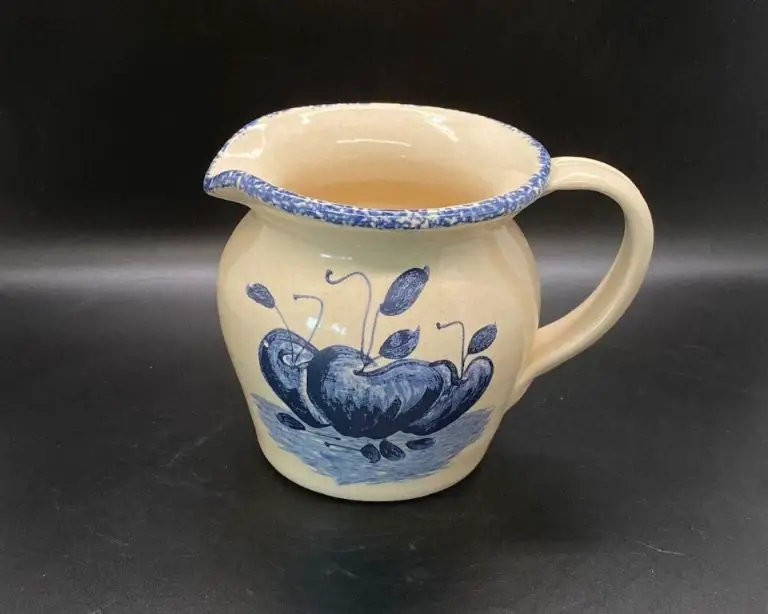What Is The Use Of Stoneware?
Stoneware is a type of pottery that has a coarse texture and is fired at high temperatures around 2,200°F. It is dense, non-porous, and less prone to chipping than other ceramic wares 1. Stoneware gets its name from its stone-like qualities – it has low absorption, which makes it suitable for holding liquids without leaking. It also has high thermal resistance, making it oven, microwave, and dishwasher safe.
Stoneware is commonly glazed to make it non-porous and improve its appearance. Unglazed stoneware has a rough, matte look and feel. The clay body can range from gray to brown in color. When fired, stoneware becomes vitrified, meaning the clay partly melts and fuses together. This makes stoneware durable, non-absorbent, and able to withstand thermal shock.
Due to its practical properties, stoneware is used to make a variety of functional and decorative items like dishes, mugs, vases, cookware and more. Both glazed and unglazed stoneware pieces can be found in homes and restaurants worldwide.
History of Stoneware
Stoneware originated in China as early as 1400 BCE during the Shang dynasty. A fine white stoneware called Yue ware was produced during the Han dynasty (206 BCE–220 CE). Stoneware further developed during the Song dynasty (960-1279 CE). Chinese stoneware utilized local stoneware clay and was fired at high temperatures around 1200–1300 °C in dragon kilns up to 130 metres in length. The clays used for stoneware were high in kaolinite content which provided an attractive glossy and impermeable character to the fired stoneware. The Chinese exported stoneware extensively throughout Asia and stoneware production subsequently spread to Japan and Korea.
In Europe, stoneware was first made in 16th-century Germany around the Westerwald region. It was made in England starting in the late 17th century as documented by Johann Friedrich Bottger’s efforts to make true porcelain in 1708. The Germans and English specialized in utilitarian salt-glazed stoneware for everyday use. American stoneware was developed in the early 19th century when Americans began producing stoneware using local clays. The alkaline, iron-rich clays of North Carolina were well-suited to produce with salt glazing. By the 1840s, stoneware production was flourishing in the US in places like South Carolina and Ohio. The Americans developed defined stylistic practices in their stoneware, utilizing creative shaped vessels and combining various decorative techniques like incising, stamping, and Albany slip glazing. (Wikipedia, 2022)
Stoneware Clay Properties
Stoneware clay is composed of natural clay materials including kaolin, ball clay, feldspar, and quartz. The high feldspar content gives stoneware its defining properties. According to Stoneware Clay Properties – Ceramic Arts Daily Forums, feldspar serves as a flux, lowering the vitrification temperature to between 2200°F and 2300°F. The fine particle size of the clays and fluxes allow stoneware to be plastic and smooth when wet.
Compared to earthenware clays that mature at lower temperatures, stoneware is less porous and more durable after firing. The clay becomes vitreous, resulting in a non-absorbent, waterproof finished product. Its excellent workability makes stoneware a popular choice for handbuilding and throwing on the wheel. When fired, the clay achieves a solid, hard body that maintains its shape without warping or shrinking excessively. Glazes also melt and bond securely to the impervious surface.
Stoneware Firing Process
Firing is a crucial step in creating finished stoneware pottery. The purpose of firing clay is to permanently harden it through sintering, which bonds the clay particles together. Stoneware requires high firing temperatures typically between 2200°F to 2400°F (1200°C to 1315°C). There are several important stages in the stoneware firing process:

Bisque Firing: The first firing done to harden unfired clay and make it easier to handle. Bisque firing is done slowly, starting at 200°F and increasing to around 1800°F.
Glaze Firing: The bisque ware is coated with glaze and fired a second time to melt and cure the glaze. Glaze firing starts around 1600°F and increases to 2200-2400°F. The glaze melts and fuses with the clay body.
Reduction Firing: Exposing clay to an oxygen-starved environment during firing. This can create interesting colors and effects by drawing out gases from the clay body. Reduction firing requires meticulous control over temperature and atmosphere.
Once cooled, the stoneware has been permanently vitrified and transformed into a durable, non-porous ceramic material safe for household use.
For more details on the stoneware firing process, see this reference: Firing Up – Beginner’s Firing Guide
Types of Stoneware
There are several major categories and varieties of stoneware used in pottery and ceramics:
Unglazed Stoneware – This type does not have a glaze coating and the natural clay color is exposed. It is porous and must be sealed for functional use with liquids. Unglazed stoneware is valued for its natural rustic appearance.
Glazed Stoneware – Glazes provide an impervious coating that makes the stoneware non-porous and suitable for functional use with food and liquids. Glazes come in infinite colors and textures like glossy, matte, crystalline, etc. Popular modern glaze types include celadon, ash, and salt.
Transfer Printed – Decorated using transfer printing of images and patterns. Developed in England in the 1750s, it revolutionized the stoneware industry by allowing mass production of intricate designs.(Ref)
Albany Slip – A traditional brown or black glaze made from an Albany clay slip. Known for its glossy appearance and used frequently on early American stoneware.
Bristol Glaze – A rich creamy white or blue-white glaze used on American stoneware in the early 1900s. It was developed in Bristol, PA and gave pottery a porcelain-like appearance.
Stoneware Glazes
Glazes are an essential part of finishing and decorating stoneware pottery. They serve both aesthetic and functional purposes by adding color, texture, and making the clay non-porous and waterproof. Some common glazes used on stoneware include:
Incorporating Stoneware Into Your-studio provides tips on glazing stoneware. Stoneware glazes move during firing so it’s important to apply each coat in the same direction. Standard glazes like temmoku, celadon, and ash glazes work well on stoneware. More specialized glazes like copper red, crystalline, and soda glazes can create unique effects. Multiple glazes are often layered or combined on one piece to achieve more complex finishes.
Glazing techniques for stoneware involve brushing, dipping, pouring, and spraying. The viscosity and application method impacts the final texture and appearance. Heavily textured or intricately carved stoneware benefits from dipping or pouring to fully coat the surface. Smooth surfaces can be selectively brushed. Spraying achieves an even, uniform coat. Proper glaze fit, thickness, and firing schedule must be tested to ensure a high quality glazed result.
Creating Stoneware
There are a few main methods for creating stoneware items today. The most common are throwing on a potter’s wheel, press molding, and handbuilding techniques like coiling and slab building. Many artists use a combination of techniques.
For throwing on the wheel, potters use a clay called stoneware clay which contains fireclay, feldspar and silica. It needs to be wedged well to remove air bubbles before throwing begins. Using the momentum of a spinning potter’s wheel, artists shape the clay into forms like bowls, vases, cups, and pitchers. This takes skill and practice to center the clay and raise up the walls evenly. A rib tool can refine the shape, and a sponge smooths the surface.1
Press molds involve pushing soft clay into pre-made plaster molds to form shapes like plates, platters, and tiles. The clay is rolled to an even thickness, placed in the mold, then compressed with a roller tool to pick up the mold’s design. Excess clay is trimmed off with a needle tool before the piece is removed from the mold.
Handbuilding techniques like coiling, pinch pots, and slab construction are often used to make decorative or functional ceramic art. Coiling involves rolling out and stacking coils of clay to build up vessel forms. Slab building uses flat slabs of clay joined together into shapes. Surface designs can be carved, stamped, or textured. Handbuilding allows great freedom and creativity in stoneware forms.
Whichever method is used, once the pieces are bone dry they are fired in a stoneware kiln. The high temperatures up to 2,200°F vitrify the clay into finished stoneware.
Notable Stoneware Artists
Some of the most famous ceramicists and potters in history have worked extensively with stoneware. These artists have mastered the unique properties and challenges of stoneware to create stunning functional pieces and works of art.
In the early 20th century, Danish ceramicist Gunnar Nylund became one of Rörstrand’s most famous stoneware artists. He led the stoneware department and created bold, modernist pieces often with matte glazes. Another Danish ceramicist, Knud Kyhn, was known for his whimsical animal figurines made of high-fire stoneware.
In Japan, stoneware artists like Shoji Hamada, Kanjiro Kawai, and Tatsuzo Shimaoka helped refine traditional Japanese folk pottery and stoneware into a modern art form. Their influence spread around the world and contributed enormously to the studio pottery movement.
Other influential stoneware potters include Peter Voulkos who pushed the boundaries of functional ceramics, Ruth Duckworth who blended Eastern and Western traditions, and Beatrice Wood whose cheeky female nudes made of lustrous stoneware became iconic.
Everyday Stoneware Uses
Stoneware is a popular type of pottery used to make a variety of household items. It is a durable, non-porous material that can withstand high temperatures, making it ideal for baking, cooking, and serving food. Some of the most common uses of stoneware in the home are:
Tableware – Stoneware is commonly used to make plates, bowls, mugs, and other dining ware. The non-porous nature prevents absorption of liquids and foods, making stoneware dishes easy to clean. Popular brands like Le Creuset and Emile Henry make stoneware dishes and tableware.
Cookware – Many Dutch ovens and casserole dishes are made from stoneware, which can withstand oven and stovetop temperatures up to 500°F. The excellent heat retention properties make stoneware suitable for slow cooking, braising, baking, and roasting. Top cookware brands using stoneware include Le Creuset, Staub, and Emile Henry.
Pottery – Stoneware clay is used to handcraft vases, pots, canisters, and other decorative pieces. Stoneware pottery can have enameled glazes in bright colors, or natural muted finishes. The daily use pieces tend to have simple glazes and shapes. Prominent pottery artists working in stoneware include Lisa Young, Elizabeth Kendrick, and Lindsay Oesterritter.
Outdoor Items – Many outdoor planters, urns, and garden pieces utilize weatherproof stoneware. The durability makes it suitable for outdoor use in all seasons. Stoneware won’t crack like terra cotta in cold winters. Campfire pots and outdoor cookware also rely on the resilient strength of stoneware.
With its versatility and ruggedness, stoneware is found in kitchens, dining rooms, living spaces, and gardens. The everyday household uses rely on the singular properties of this clay that withstand high heat, moisture, and daily wear-and-tear.
Caring for Stoneware
Properly caring for stoneware is important to keep it looking its best and extending its lifespan. There are a few key things to keep in mind when caring for stoneware items:
Cleaning – Use mild dish soap and warm water to hand wash stoneware. Avoid soaking stoneware and don’t use abrasive cleaners or scrubbers which can damage the finish. For stubborn stains, let the stoneware soak in warm soapy water before gently scrubbing with a soft cloth or brush.
Storage – Store stoneware in a cool, dry place away from extreme temperature fluctuations which can cause cracking. Stack items carefully and cushion with towels to prevent chipping. Avoid stacking different stoneware pieces tightly together as they may scratch.
Repair – Superglue or epoxy can repair minor chips and cracks. Use glue marketed as food-safe if repairing kitchenware. Larger cracks may require professional repair to maintain structure and prevent further damage. Severely damaged stoneware is best discarded and replaced.
With proper care and maintenance, high quality stoneware can last for many years of cooking, baking and serving. Handle with care and clean gently to maximize its lifespan.



